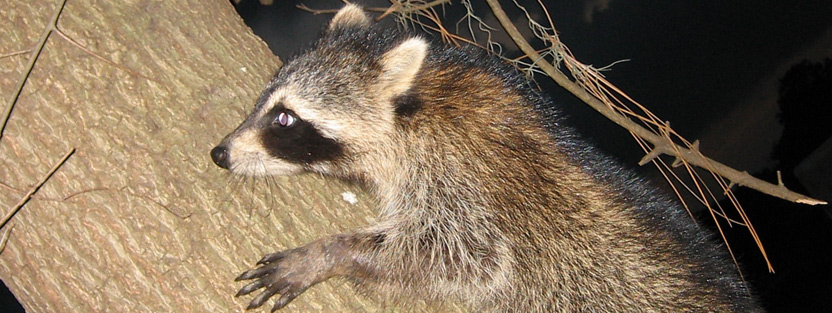NEED LOCAL HELP? We have
wildlife removal professionals servicing 95% of the USA. Click
here to hire a
local raccoon removal expert in your home town. Updated
2018. But read the below advice first!
They might, but they probably won’t. I don’t mean to be
off-putting, but it is my experience that neither mothballs nor
ammonia are effective raccoon repellents. If there are people
who have been successful in their attempt of getting raccoons
out of their homes or properties by using ammonia or mothballs,
I certainly haven’t heard of them. I guess that’s what you would
expect taking into consideration that I am a wildlife removal
professional – case in point, if the tactic worked, there
would’ve been no need for my help. That being said, if it didn’t
happen by now, I doubt that I will ever bear witness to a
mothball or ammonia deterrent success story. On the other hand,
I have seen my fair share of attics filled with mothballs,
soaked in bleach or reeking of ammonia while raccoons went about
their business totally uninterrupted.

Mothballs (or naphthalene) have been marketed for decades as
critter repellents, and are in fact the base ingredient for
almost all pest deterrents, alongside coyote urine. Although
naphthalene has been registered as a pesticide in the US over 60
years ago, mothballs are bad for the environment, and are not an
eco-conscious choice to make. You should also be aware that by
having mothballs around, you’re constantly exposed to
insecticide inhalation – repeated and long exposure can cause
serious health issues. And, number one on the list, mothballs
don’t drive raccoons away.
Ammonia, while it is considered dangerous for the environment,
it has no negative or hazardous effects on humans or other
mammals. As ammonia occurs naturally in our environment, our
bodies know how to decompose any toxicity levels in manmade
ammonia solutions. While there is no chance for ammonia toxicity
to build up in our bloodstream, this is not the case with
amphibians and fish, hence the environmental danger part. If you
do decide to use ammonia as a raccoon repellent, make sure it
doesn’t come in contact with bleach, as this combination is
potentially dangerous and can lead to the creation of a
poisonous gas. Again, in what concerns raccoons, the chances of
them leaving your attic because of some pungent ammonia odor are
extremely minimal.
It’s important to understand how urban and suburban raccoons
have been constantly evolving since they’ve invaded our cities
and countryside – talking about physiological, not physical
evolution. The comfort and safety of our urban structures have
gradually taught raccoons that the shelter and constant food
source our homes offer them is way more important to their
survival than keeping away from unpleasant smells. And as female
raccoons usually take care of their young for the whole first
year of their infant lives, this knowledge is naturally
transmitted from generation to generation. This being said, it’s
hard to see why a raccoon would leave the security of your attic
or chimney – the best urban environment for them to give their
young a great start in life – just because they would prefer a
place that smells different.
Go back to the Raccoons in the attic
home page.